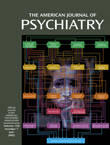Safety of Vagus Nerve Stimulation With ECT
To the Editor: ECT is a safe and effective treatment for major depression. (1). Vagus nerve stimulation is a treatment approved by the Food and Drug Administration for refractory epilepsy. It has been reported in an open trial (2) to have acute and possibly continuing antidepressant effects on treatment-resistant depression. However, in a pivotal randomized controlled trial (3), vagus nerve stimulation was found not to be efficacious in treating acute depression. Vagus nerve stimulation involves implantation of a pulse generator that delivers intermittent electric stimulation to the left vagus nerve. The cardiac effects of vagus nerve stimulation are thought to be minimal (3).
ECT has been associated with increases in vagal (parasympathetic) tone immediately after stimulation, which can result in arrhythmias and brief periods of asystole (4). Since cardiac arrhythmias are responsible for rare cases of cardiac mortality with ECT, an enhancement of the cardiac effects resulting from combination treatment would be a significant concern. We know of no literature on the safety of vagus nerve stimulation used with ECT for the treatment of depression. We report a case in which we used vagus nerve stimulation in conjunction with short-term ECT to treat major depression.
Ms. A, a 50-year-old woman with a 20-year-history of recurrent major depressive disorder, had had eight previous episodes of severe depression. She had had multiple trials of antidepressants, mood stabilizers, and antipsychotic medications and had achieved inadequate response. Over 16 years she had received seven courses of short-term ECT and had achieved adequate response; she experienced mild cognitive impairment as the only complication. Her improvements were brief, and maintenance ECT was unable to sustain the response.
Ms. A then underwent implantation of a NeuroCybernetic Prosthesis vagus nerve stimulator (Cyberonics, Houston) at our center. She remained stable for the next several months. She then developed a recurrence of severe depression. She received acute bilateral ECT with a stimulus dose (225 millicoulombs) 1.5 times the seizure threshold. The initial four ECT sessions were given with the vagus nerve stimulation generator turned off. Ms. A showed a slower response than with previous ECT treatments; therefore, the latter five treatments were administered with the vagus nerve stimulation operating at 0.75 A. Labetalol, 15 mg/day; methohexital, 100–120 mg/day; and succinylcholine, 100 mg/day, were administered during each treatment. Ms. A’s depression improved; her score on the Hamilton Depression Rating Scale (21-item version) decreased from 26 at baseline to 3 by the end of the treatments.
During ECT sessions 1–4 (with the vagus nerve stimulator off), the mean increase in Ms. A’s heart rate was 31 bpm, and the increase in her systolic blood pressure was 32.5 mm Hg. During ECT sessions 5–9, the mean increase in heart rate was 26 bpm, and the mean increase in systolic blood pressure was 40.4 mm Hg. Ms. A’s score on the Mini-Mental State Examination remained at 29–30 during these treatments.
Other than the slight increase in systolic blood pressure, no untoward autonomic disturbances were observed throughout the course of acute ECT treatment, with or without vagus nerve stimulation. There were no cognitive impairments when both treatments were combined; ECT did not interfere with the functioning of the vagus nerve stimulation generator. In conclusion, this case suggests that vagus nerve stimulation may be safely administered during the course of ECT, although future trials are needed to assess the safety of combined ECT and vagus nerve stimulation.
1. Fink M: Who should get ECT?, in The Clinical Science of Electroconvulsive Therapy. Edited by Coffey CE. Washington, DC, American Psychiatric Press, 1993, pp 4-7Google Scholar
2. Rush AJ, George MS, Sackeim HA, Marangell LB, Husain MM, Giller C, Nahas Z, Haines S, Simpson RK Jr, Goodman R: Vagus nerve stimulation (VNS) for treatment-resistant depressions: a multicenter study. Biol Psychiatry 2000; 47:276-286Crossref, Medline, Google Scholar
3. George MS, Sackeim HA, Rush AJ, Marangell LB, Nahas Z, Husain MM, Lisanby S, Burt T, Goldman J, Ballenger JC: Vagus nerve stimulation: a new tool for brain research and therapy. Biol Psychiatry 2000; 47:287-295Crossref, Medline, Google Scholar
4. Kellner CH, Pritchett JT, Beale MD, Coffey CE: Handbook of ECT. Washington DC, American Psychiatric Press, 1997, pp 13-14Google Scholar



